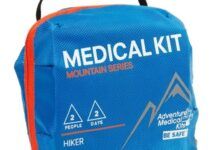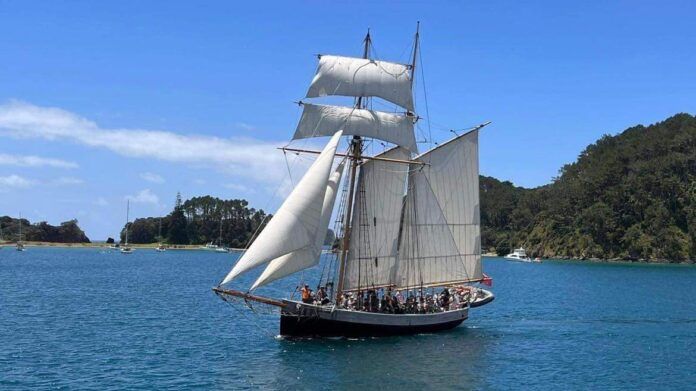
“Ready of the fore!” a crew member called back.
“Hall away the fore!” Captain Peter yelled in reply.
We hoisted up the foresail, on board the R. Tucker Thompson. I was guided alongside two other girls on to one of the foresail halyards. The peak. The mainsail and foresail have two separate halyards, one for the peak and one for the throat. They are hoisted together so our trainees’ communication and teamwork on the different halyards are critical and encouraged. We worked together pull by pull, until the fore was hoisted. Connor then “made fast” on the halyard and we watched in awe as the rest of our trainee whanau (family) hoisted the mainsail and headsails.
And off we went, waving goodbye to our families on the wharf as we set sail down the river from Opua to Motuarohia for the night.
The R. Tucker Thompson is a gaff-rigged top sail schooner, and for those who do not live in the Bay of Islands, she is beautiful, with a stunning teak deck, and as many as seven sails hoisted at once. She was constructed in the late 1970s by Robert Tucker Thompson, Tucker, and was launched in 1985. She was designed to embody the best features of a traditional design, enhanced with modern technology and materials.
She is every sailor’s dream.
The list of roles she has played over the years as a crucial part of the community is endless: participating in the Nuclear Free Pacific protest flotilla, providing daysails in the Bay of Islands to those willing to experience her beauty as a tall ship, offering sail training voyages for youth of Te tai Tokerau, including her own film star roles for the filming of The Adventurer in late 1986, and more.
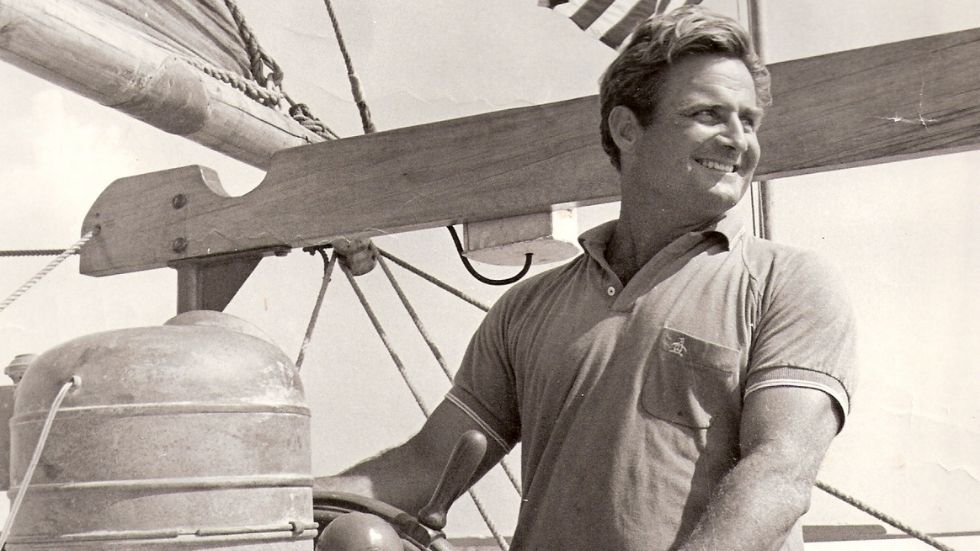
Today, she is a non-profit organization, known as R. Tucker Thompson, with the mission of “learning for life through the sea.” Their “focus is on education experiences for all ages” through seven-day youth voyages during the winter, which are not only focused on bringing people together as friends, but also living around people you have never met, and taking orders from the crew and captain on board. Most importantly, introducing the young people of Northland and those across the motu (island) to the power, importance and grounding abilities of mother nature. Our ocean.
SEVEN DAYS AT SEA WITH STRANGERS
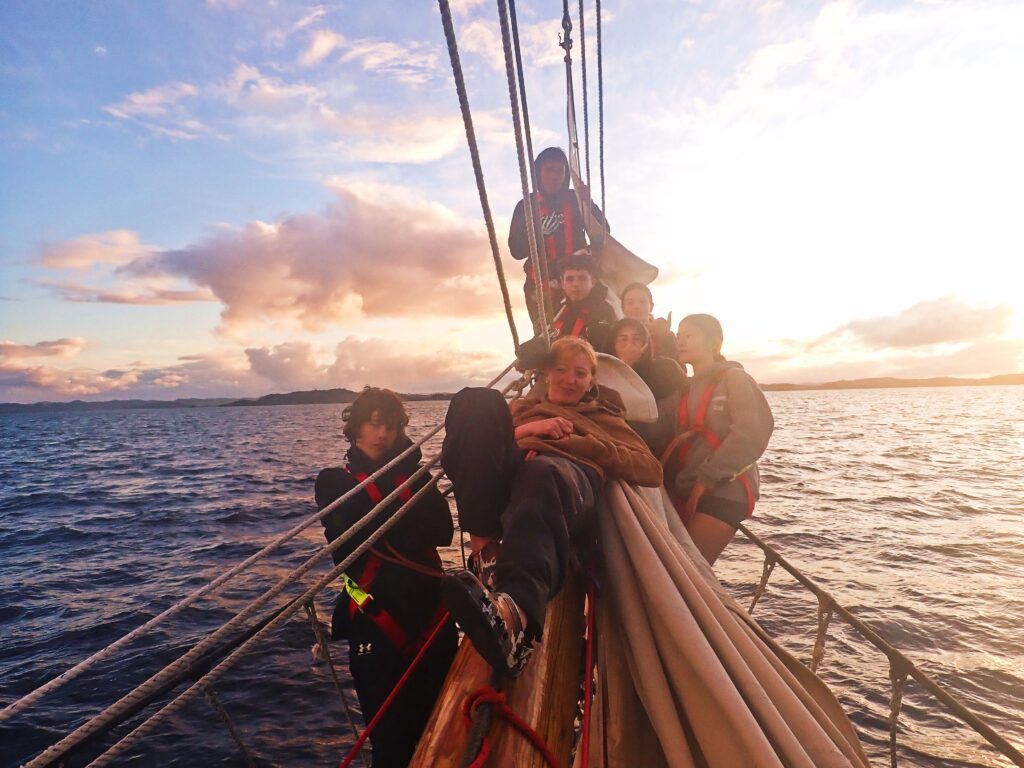
We anchored at Motuarohia and as night fell that afternoon all 11 of us sat snuggly around the salon that was really meant for eight; it made us really get to know those around us and to get comfortable in a small environment with people you have never met very quickly.
We were then assigned groups and jobs based around a roster system and split into three groups: mainsails, headsails and foresail. Each day we were responsible for hoisting and controlling the sails we were assigned to. Additionally, we were also assigned various morning tasks such as polishing the brass compasses and hatch covers, cleaning down below deck and scrubbing it.
In the morning of day one, we woke up at seven and jumped into our togs (swimsuits). I was eager to get in and out quickly, so I swung into the water from the rigging, landing into the ice-cold winter water perfectly on my back, leaving it bright red with the most stinging pain of a beautiful backslap.
Everyone got in, including the captain and all the crew.
We then sat down for breakfast and then got into our morning chores, which started our morning routine for the next seven days; it became comfortable as we settled into life onboard. Each day we went for a sail, explored the place we had anchored at, did teambuilding skills, alongside pushing each other outside our comfort zone with things like the Tucker challenge, climbing the rigging, helming the ship, tying knots and life skills.

The R. Tucker Thompson is 58 feet (18 meters) on deck and 65 feet (20 meters) of sparred length. She sleeps 19 passengers. As you walk down the companionway, the captains’ quarters are to your left and the six crew bunks on either side as you continue forward towards the galley, which has a two-burner stove and a sink, only enough room for one person. Pass the galley and you enter the salon with two trainees’ bunks on the right and a large table, where so many of our memories were made, to your left. You then enter the sleeping area where there are nine bunks all squashed together. At the very front of the ship, is a sink and the heads.
PEACE ON HIGH
My fondest memory made on board was the evening of day two: we had just anchored in Te Puna inlet, the wind was 25 knots average and gusts over 30 knots. Our ship was tossed in unnatural, wild directions, with rain that was driving horizontally right for our eyes, instead of coming from the sky. Which made on deck a very unpleasant place to be.
“The Gaskets on the topsails aren’t tied,” Captain announced while pointing up at the topsail.
The topsails are square top sails that are on foremast, the R. Tucker Thompson has two topsails an upper and a lower. They can be hoisted and dropped by lines on deck, but they must be tied up to be stowed away properly. Especially when the winds are up, so the topsails do not flog and flap around.
“I’ll go up,” I said to Luca and Peter.
“Alright, chuck on a harness then,” Luca replied, not expecting anyone to volunteer.
I was already soaked to the bone from the sail over but, nevertheless, I secured my harness properly over the top of my massive jacket. Clipped onto the rigging and stepped out onto the side railing, slowly making the ascent up to the topsails. The rigging was swaying as the gusts came through. My hands were bare and exposed to the cold damp air rushing around them, which made it difficult to climb. I made it to the topsails, hanging on to everything in my life.
I was scared. Although I tried to convince myself I was not.
I got to the bottom topsail lay over the spar, started scooching along to the end. The deck below looked tiny from almost 18 meters in the air.
“Do you think you can tie the upper gaskets?” Luca asked, half yelling, so I could hear him over the hauling wind.
“I’ll try.”
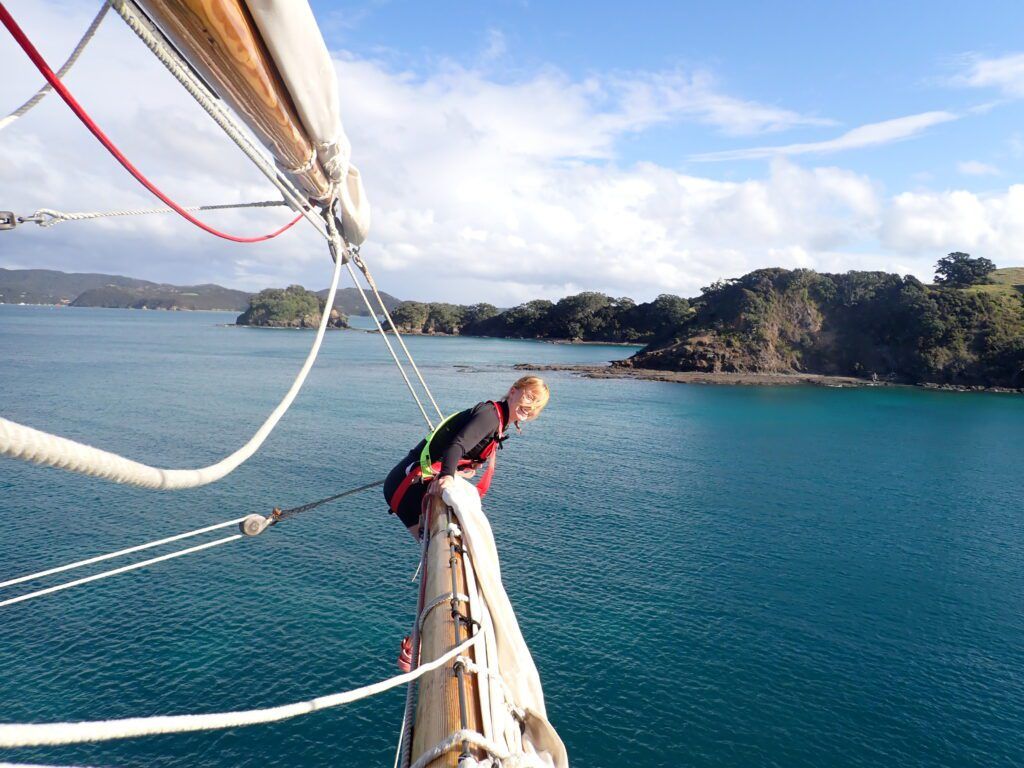
The R. Tucker Thompson environment and crew lets you do something new and scary on your own terms. From that moment on I almost lived up the mast; every moment I had to spare, that I was not spending with new friends, I was up the mast. It was so peaceful.
Many of the trainees I was with at different points and times pushed themselves outside their normal comfort zone and the joy on their faces when they succeeded was a gem alone. The whole crew of the Tucker whanau (family) are playing a massive part in our young people of Aotearoa. So, if you are ever travelling, or live in the Bay of Islands, and need something to do, go for a daysail on the most beautiful ship in the Bay. You will not regret it.



























